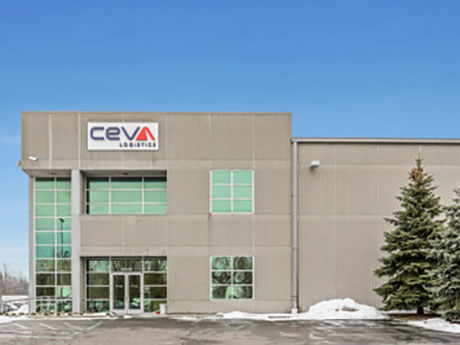By Anthony Avendt, Cushman & Wakefield
Like most markets in the U.S. and Canada, Detroit’s industrial sector has seen its ups and downs. Detroit’s always been a bit of an outlier though due to extreme volatility. What’s more, we’ve (hopefully) learned lessons from past downturns that well position the city and its commercial real estate regardless of continued strong demand and rent growth or any bumps in the road we may encounter.
Detroit is a little different from similar-sized markets in the region. First, while it’s certainly part of the U.S. heartland, the city’s geographic position on a peninsula means it’s poorly suited for broad distribution to large swaths of the country. Second, of course, is the auto industry’s impact.
The auto industry is widely dispersed across the U.S. now, but Detroit and Michigan remain its heart and brain. As the sector pivots to autonomous and electric vehicles, that is going to drive demand for industrial space. Ford already has announced an investment of $40 to $50 billion over the next decade-plus, including redevelopment of Michigan Central Station as anchor of its Mobility Innovation District.
Stellantis, the parent of Chrysler, Jeep and Dodge, has announced its own $35.5 billion investment in electric vehicles over the next five years. For its part, GM has already invested $7 billion in Michigan production facilities for electric vehicles, including its 2021 opening of Factory Zero that straddles Detroit and Hamtramck as well as another plant recently announced for Delta Township. Altogether, GM has also allocated $35 billion toward electric vehicles.
Regardless of whether these cars, trucks and vans are manufactured in Detroit or elsewhere, much of the engineering and tooling are performed in and around Detroit, which has a tremendous, positive impact on industrial demand and the overall economy.
Consider the pickup truck, that icon of the American road, farm and construction site that now dominates auto sales. Ford has introduced an electric F-150, the Lightning, and GM and Dodge aren’t far behind. F-150 Lightnings are produced in Dearborn. Ford builds more F-150s in a day than some electric-only manufacturers have ever produced.
As Ford, GM and Stellantis refine and scale not just pickup but overall electric-vehicle production and suppliers bloom around them, that will naturally drive industrial development, tenant demand and absorption in the Detroit region and across the Midwest.
That’s the future, and it’s bright. The current situation isn’t too shabby either.
Market fundamentals
As we hit mid-year, Detroit’s industrial market is in a strong position. Overall vacancy sits below 5 percent, with continued, robust demand forecast for the remainder of 2022 into 2023 and beyond. 2020 and 2021 gave us a rollercoaster ride, with net absorption of negative 6.6 million square feet and then positive 8.8 million square feet, respectively. We forecast absorption to moderate this year and next to between 3 and 3.3 million square feet before another surge in 2024. Triple-net asking rates are over $7 per square foot, and we forecast them to increase over the next three years.
Detroit’s industrial market has a history of boom-and-bust cycles. That’s tended to make some REITs and other institutional investors hesitant to buy and especially build in the region. That was the past and times are changing.
Relatively high returns, recent successes and a strong outlook have made the market more attractive to out-of-town developers and drawn millions of square feet of new development from the likes of NorthPoint and Flint Development, based in Missouri and Kansas respectively; the return of Minneapolis-based Opus Development to the region; and continued development from local powerhouse Ashley Capital.
Even with all those new buildings planned and underway, speculative development has been relatively restrained with deliveries representing less than 1.5 percent of the total market inventory per year, significantly below many Midwest markets. Speculative development is expected to continue to lag the rest of the nation and the Midwest throughout 2023 and 2024, with just 7.4 million square feet of warehouse/distribution buildings added, again less than 1.5 percent of its total industrial inventory.
That, too, leaves Detroit well positioned. There’s either runway for more growth, or, should a downturn occur fueled by inflation or persistently high energy prices, the region is well placed to ride it out.
Detroit has another hedge in its favor. Its geographic location and the fact that it’s a relatively small MSA, population 4.4 million, meant Detroit’s build-out of e-commerce networks lagged other, larger and more centrally located markets. Consequently, it’s less likely to experience headwinds associated with potential over-supply and the specter of large blocks of sublease space. Meanwhile, notable national retailers are actively seeking space in metro Detroit to support their e-commerce and omnichannel sales.
Over the past 100 years, Detroit has faced a wide variety of economic scenarios and still stands as a vital cog in the U.S. and global economy. Similarly, the city’s industrial sector has seen more than its share of booms and downturns, too, and we’ve learned plenty of lessons from both. Those lessons now translate to an industrial market with low vacancy, strong demand and a reasonable pipeline of new development. We forecast continued growth, but, like the city itself, we’re ready for anything.
Anthony Avendt is a managing director and automotive advisory group lead with Cushman & Wakefield. This article originally appeared in the July 2022 issue of Heartland Real Estate Business magazine.



